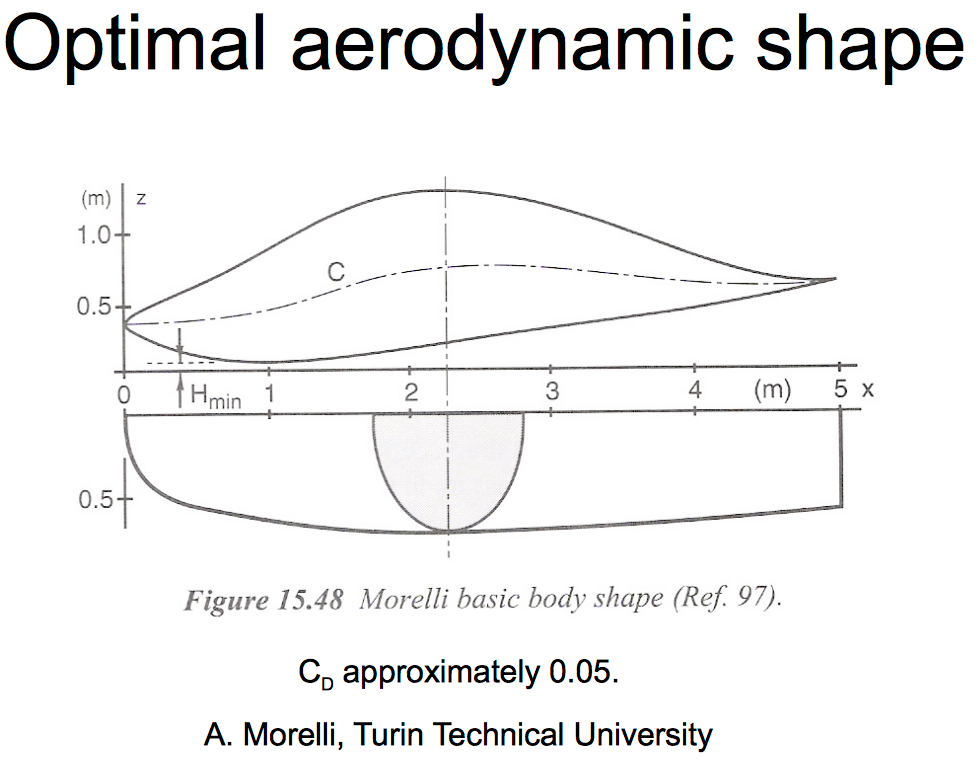I know a lot was talked in this forum about ALberto Morelli's ideal aerodynamic proposal:


But this design, despite represent a 0,05 drag shape, do not consider any wheel.
Aptera, based in Morelli's shape, reached 0,11 to 0,125 (varies according Aptera models) drag coefficient after add wheels, even if using streamlined covers to the wheels.

For other side the
Solar Aztec car from MIT, had 0,12 drag, despite have no streamedline covers to the wheels and even a open hole in the shell near wheels:


Maybe because it was more rounded on top than Aptera, I don't know... Aptera's wheels was large, thick, and maybe it's the reason the drag raised a lot.
A third Morelli's shape car was the
Solarworld No.1, but
I could not find the drag coefficient for this vehicle, despite a lot of web research :



I bet Solarworld No.1 have lower drag than Aptrera and MTISolar Aztec .
But the reason I created this thread is about Ecorunner VI, with 0,048 drag coefficient already with wheels.

The earlier model,
Ecorunner V, already had a drag of 0,0512 with wheels. Other vehicles with similar size and "torpedo shape style" in Shell Eco Marathon had a drag of 0,08 with wheels.
Maybe there a key point, precise calculation for aerodynamic, simulation on computer, trying to find the best shape alread with wheels (streamed covered), instead of try a shape to just later try to add wheels to it.
I just wonder what is be Ecorunner VI drag coefficient without wheel...
The hope I have it's that maybe it's possible to find a much better way to add wheel to a Morelli's basic design, and still have a drag bellow 0. or even bellow 0,91